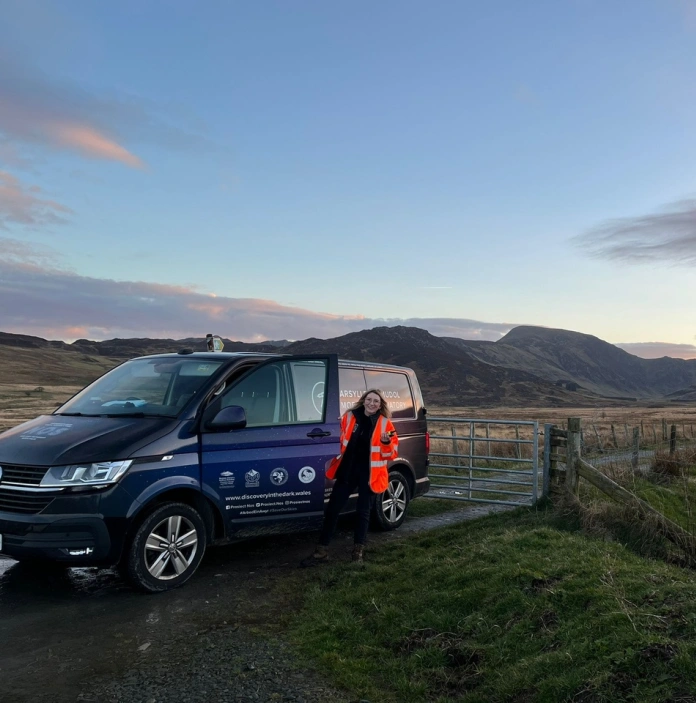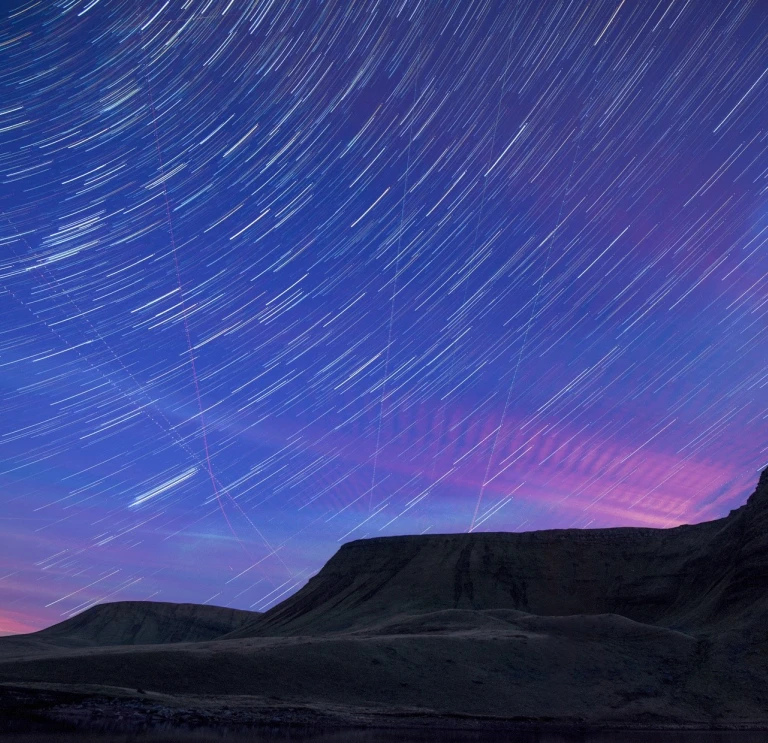Cymru. The home of myths and legends, the land of story and song. But did you know that above our rolling hills, stormy seas and chiselled mountains lie some of the darkest skies left in mainland Europe? When the sun sets on our wild west coast, eyes turn to the skies for the spectacle of thousands of stars to begin. The stars themselves can be used to trace Wales’s history and folklore, with names and uses for constellations giving an insight into Wales’s past.
A little over 100 years ago, light pollution didn’t really exist in Wales. An unpolluted night sky was visible and accessible to anyone as soon as they stepped out of their homes in the evening and glance upwards.
To those who tended flocks in the fields, the stars were a constant companion, a reminder of lessons from the land handed down through generations. The workers had a deep understanding of the constellations and their correlations to the changing seasons. The constellation known by its Greek name of Bootes, to the Cymry is Hu Gadarn, the legendary founder of farming in Wales. In the night sky, he is connected to Taurus, or Yr Ych (the Ox).
One folklore tale relating to the founding of Cymru sees Hu Gadarn help shape the nation’s hillsides by taming powerful and mighty oxen, putting them before the plough, changing the way and places we lived in forever. The impact of the stars on our stories is clear.
The Plough is a constellation many will be familiar with, often referred to as the Big Dipper. But in Cymru it can go by many names, including Yr Aradr, the more direct translation of The Plough, and potentially a connection to the same legend regarding the creation of Cymru in its current form? Yr Aradr is actually an asterism (a collection of stars within a much bigger constellation) – Ursa Major, or the Great Bear.
Other names for the Plough change according to where you are in the country. For example, in north west Wales, some communities know it as Sêr y Llong, or The Ship’s Stars. The exact reason behind the name has been lost over time, but some say that the name perhaps links to the Plough being an useful tool for night sky navigation, especially for sailors. Using the Plough, we can navigate ourselves to the North or Pole Star. This star is a crucial point in the night sky, around which all other stars seem to travel, and essential for celestial navigation. In fact, the North Star was still used by those sailing the seven seas until as recently as 1975. Before the days of satellites and GPS, every sailor, from fishing vessels to navy frigates, would have needed an understanding of the night sky, or risk being left to drift directionless across the ocean.
We have a long history here in Cymru of looking up to the cosmos. It is part of our heritage and culture, linking us back to generations of people long returned to the sky. We we have hundreds of castles and hill forts, with burial chambers stretching back to neolithic times, 5,000 years ago.
If you visit one of these heritage sites at night, such as Bryn Celli Du on Ynys Môn, you would be welcomed by a sight unchanged for the entire history of humankind. To stand on top of the mound and look into the night, you will see the same stars, the same Milky Way, that those people 5,000 years back in history saw. You are time-travelling into an ancient past.
In Cymru, we are proud that we have the highest percentage of protected dark skies in the world. We have two International Dark Sky Reserves, Bannau Brychieniog National Park, the first reserve in Wales, and Parc Cenedlaethol Eryri, the largest reserve in the UK. We have numerous dark sites spread across the country, and the first Dark Sky Community accolade was recently awarded to Presteigne and Norton. Europe’s only Dark Sky Sanctuary sits on the western edge of the country, above the isolated island of Ynys Enlli, said to be home to twenty thousand Saints, as well as thousands of stars. From the immense and impressive darkness of the Cambrian mountains, in the heart of Wales, to Penbont House in the Elan Valley Dark Sky Park, Cymru is truly blessed, and indeed world-leading in its stargazing opportunities.
Wales’ Dark Sky Week takes place every February, and is a collaboration between all eight designated landscapes in Wales; the three National Parks of Eryri, Bannau Brychieniog and Pembrokeshire Coast and the five Areas of Outstanding Natural Beauty of Pen Llŷn, Ynys Môn, Gower, Bryniau Clwyd a Dyffryn Dyfrdwy and Wye Valley. Together we work to raise awareness of how precious our dark skies are, and to promote understanding of how we can all play a part in saving our stars.
Dani Robertson is the author of All Through the Night; Why Our Lives Depend on Dark Skies. She is a Dark Sky Advocate and was awarded the IDA European Dark Sky Defender award in 2022. She works as a Dark Skies Officer in Wales for Eryri National Park and the Areas of Outstanding Natural Beauty through the Dark Skies Partnership, Prosiect Nos.
More information:
Discovery in the Dark website (English)
Discovery in the Dark website (Cymraeg)

